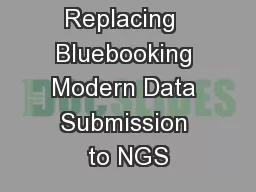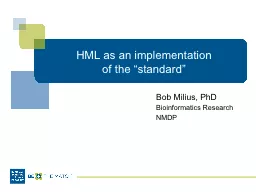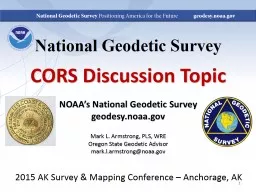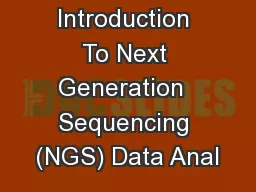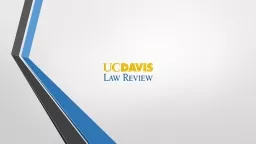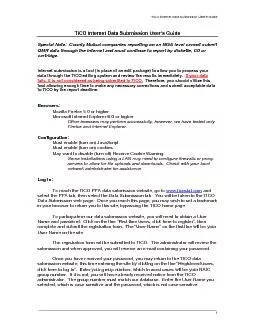PPT-Replacing Bluebooking Modern Data Submission to NGS
Author : briana-ranney | Published Date : 2018-11-10
by Dru Smith NSRS Modernization Manager David Zenk Northern Plains Regional Advisor April 25 2107 NGS Geospatial Summit 1 Summary of Intent The overall message
Presentation Embed Code
Download Presentation
Download Presentation The PPT/PDF document "Replacing Bluebooking Modern Data Submi..." is the property of its rightful owner. Permission is granted to download and print the materials on this website for personal, non-commercial use only, and to display it on your personal computer provided you do not modify the materials and that you retain all copyright notices contained in the materials. By downloading content from our website, you accept the terms of this agreement.
Replacing Bluebooking Modern Data Submission to NGS: Transcript
Download Rules Of Document
"Replacing Bluebooking Modern Data Submission to NGS"The content belongs to its owner. You may download and print it for personal use, without modification, and keep all copyright notices. By downloading, you agree to these terms.
Related Documents

